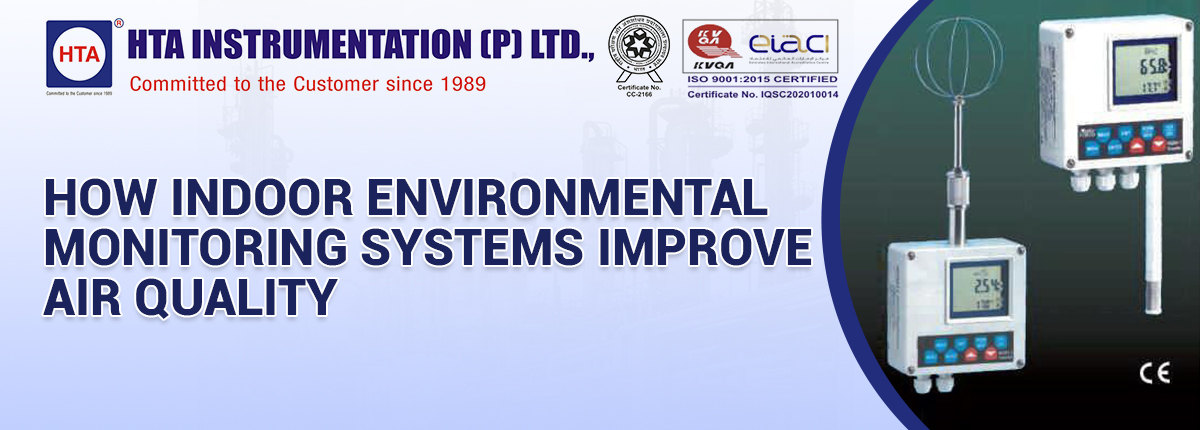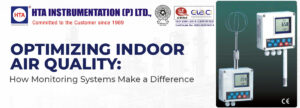
Why Portable Dataloggers are Crucial for Accurate Data Collection
Portable dataloggers are essential in various industries where precise data collection and monitoring are necessary for quality and safety. At HTA Instrumentation (P) Ltd., we

In recent years, there has been a growing awareness of the importance of Indoor Air Quality (IAQ) and its impact on health and well-being. Poor indoor air quality can lead to a variety of health issues, including respiratory problems, allergies, and even more serious conditions. Indoor environmental monitoring systems play a crucial role in improving air quality by providing real-time data on key indoor air quality parameters such as temperature, humidity, carbon dioxide (CO2) levels, volatile organic compounds (VOCs), particulate matter (PM2.5 and PM10), and carbon monoxide (CO). By monitoring these parameters, proactive measures can be taken to maintain a healthy indoor environment.
Understanding Indoor Air Quality
Indoor air quality refers to the quality of the air inside a building, which can be affected by various factors such as pollutants, humidity levels, and ventilation. Common indoor air pollutants include particulate matter, volatile organic compounds (VOCs), carbon monoxide, and radon. High levels of these pollutants can have adverse effects on health, especially for vulnerable population such as children, the elderly, and people with respiratory conditions.
The Role of Indoor Environmental Monitoring Systems
Indoor environmental monitoring systems are designed to continuously monitor key parameters related to indoor air quality, such as temperature, humidity, carbon dioxide levels, and VOC concentrations. These systems use sensors to collect data in real time, which is then analysed and displayed on a dashboard or mobile app. This real-time data allows building owners, facility managers, and occupants to monitor indoor air quality levels and take appropriate actions to improve them.
Benefits of Indoor Environmental Monitoring Systems
Best Practices for Using Indoor Environmental Monitoring Systems
Conclusion
Indoor environmental monitoring systems play a crucial role in improving indoor air quality by providing real-time data on key parameters such as temperature, humidity, and air pollutants. By continuously monitoring indoor air quality levels and providing actionable insights, these systems help building owners, facility managers, and occupants maintain a healthy indoor environment. Investing in an indoor environmental monitoring system is an investment in the health and well-being of building occupants, and can lead to improved indoor air quality and overall quality of life.

Portable dataloggers are essential in various industries where precise data collection and monitoring are necessary for quality and safety. At HTA Instrumentation (P) Ltd., we

Clean room validation is crucial in industries where controlled environments are essential, such as healthcare, pharmaceuticals, and biotechnology. HTA Instrumentation P Ltd specializes in clean

In today’s fast-paced world, maintaining a healthy indoor environment is more important than ever. Indoor air quality (IAQ) directly affects the health, comfort, and productivity

In today’s world, sound measurement and monitoring play a crucial role in industries ranging from environmental testing to workplace safety. A Sound Level Data Logger
